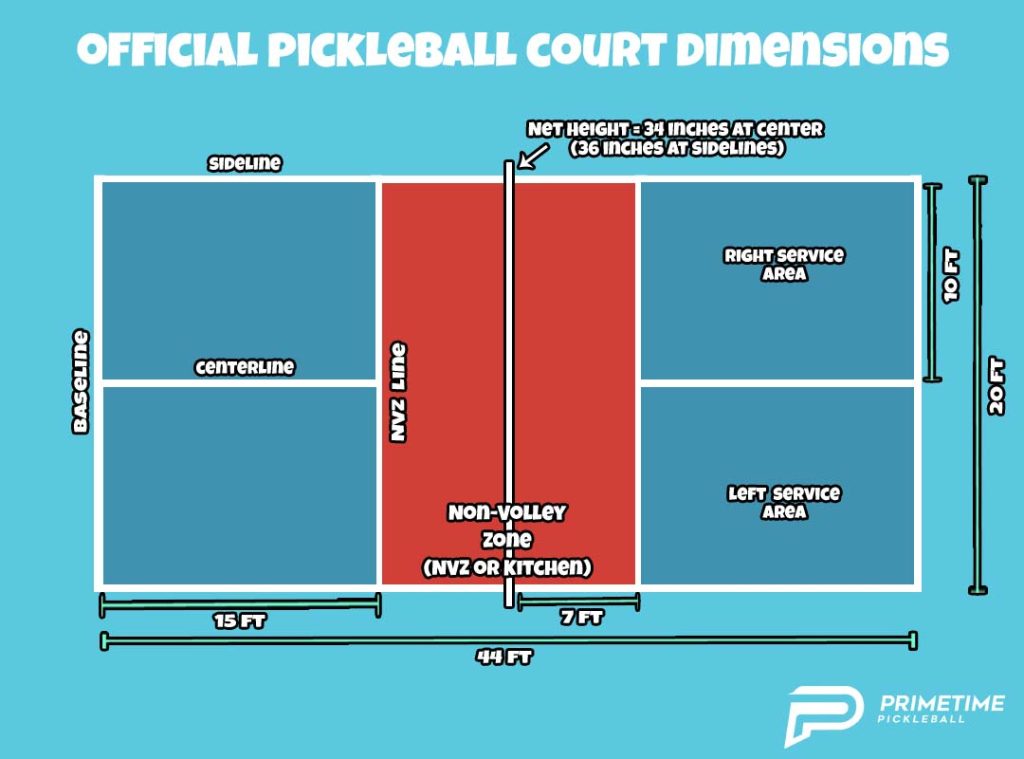Why Illinois and Midwest Are Selecting Us for Pickleball Courts Design & Building
Secret Consider the Building And Construction of Pickleball Judiciaries: From Site Option to Last Coatings
The building and construction of pickleball courts includes a variety of vital aspects, starting with the choice of a suitable site that stabilizes access with ecological considerations. Important aspects such as court dimensions, surface materials, and water drainage systems significantly affect not just the high quality of play however additionally the durability of the facility.
Website Selection Requirements
When beginning on the building and construction of pickleball courts, it is important to nail down the website option criteria that will guarantee optimal playability and availability. The location must be easily obtainable for players, ideally positioned near suburbs or community facilities, to encourage participation.
Furthermore, the terrain must be degree and steady, as unequal ground can result in safety and security risks and influence gameplay. Sufficient drain is likewise critical; choosing a site with great water drainage will certainly aid preserve court conditions throughout adverse climate.
Another crucial consideration is the availability of utilities. Accessibility to power and water is required for illumination and maintenance objectives. In addition, proximity to parking centers is necessary, facilitating very easy accessibility for gamers and viewers alike.
Ecological factors can not be overlooked; all-natural shade from trees can boost player comfort, while direct exposure to dominating winds may interrupt play. Last but not least, zoning guidelines and neighborhood assistance ought to be considered to guarantee that the task straightens with local guidelines and gets the support it needs for effective execution. By thoroughly assessing these standards, stakeholders can produce an inviting and functional atmosphere for pickleball fanatics.
Court Capacities and Format
To ensure optimum gameplay and adherence to regulations, the measurements and design of pickleball courts should be very carefully defined. A conventional pickleball court measures 20 feet in size and 44 feet in size for both singles and increases play. The suggested layout consists of a non-volley zone, frequently described as the "cooking area," expanding 7 feet from the web on either side. This area is essential, as it affects gamer positioning and shot choice - Illinois and midwest.
The net elevation is established at 36 inches at the sidelines and 34 inches at the facility, developing a mild dip that affects ball trajectory. Court markings are similarly vital; lines need to be 2 inches large and distinct in shade to ensure exposure.
Additionally, a buffer zone bordering the court is a good idea, typically expanding 5 to 10 feet beyond the sidelines and standards to fit gamers' activities and improve safety. Appropriate design and measurements not just guarantee conformity with main guidelines yet likewise improve the overall having fun experience, accommodating both leisure and competitive play. Careful planning in these areas is paramount to the successful building of pickleball courts.
Surface Material Options
Selecting the best surface area material for pickleball courts is crucial for guaranteeing optimal gamer efficiency and safety. The selection of surface area can substantially impact gameplay, including sphere bounce, traction, and player convenience.
There are a number of choices offered, each with its distinctive features. Asphalt is a popular option due to its toughness and reduced maintenance demands. It offers a strong having fun surface area that can withstand numerous weather but may need periodic resurfacing.
Concrete is an additional widely utilized product, using excellent longevity and a smooth surface. It enables constant sphere bounce however can be tough on gamers' joints, making it less preferable for lasting play without proper blog here padding.
For those looking for boosted comfort and shock absorption, supported acrylic surfaces present a sensible choice. These surfaces incorporate a base layer with an acrylic topcoat, offering improved grip and a softer feel, which is useful for lowering the threat of injuries.
Finally, synthetic turf is obtaining traction, particularly for multi-purpose facilities. Its flexibility and reduced maintenance requires make it an eye-catching choice, though it might not supply the same sphere reaction as typical hard courts. browse around here Mindful factor to consider of these options will certainly make sure an optimal playing atmosphere.
Water Drainage and Illumination Factors To Consider
Appropriate water drainage and efficient lighting are essential components in the building and construction of pickleball courts, dramatically affecting both playability and safety and security. Adequate drain systems stop water build-up, which can lead to unsafe surface areas and damages to the court structure. A properly designed water drainage plan includes sloped surfaces and proper materials to assist in water flow far from the playing location - Illinois and midwest. This not just protects the honesty of the court but additionally minimizes downtime because of inadequate weather.
Lights is just as vital, especially for courts intended for evening use. Appropriate lighting boosts exposure, making sure that players can see the sphere clearly and lowering the threat of crashes. The placement of lights components should be purposefully prepared to remove darkness and offer even circulation of light throughout the court. LED lights are recommended for their energy efficiency and longevity, using brilliant lighting while decreasing operational prices.

Last Coatings and Upkeep
After resolving drainage and illumination considerations, focus turns to the last surfaces and recurring maintenance of pickleball courts. Typical choices include acrylic coverings and specialized sporting activities surface areas that provide optimal grip and cushioning.

Seasonal upkeep could include resurfacing every couple of years, depending upon usage and ecological variables. Correctly preserving internet, court lines, and bordering locations is similarly important to supply a safe and enjoyable having fun experience. By purchasing high quality surfaces and sticking to an organized upkeep timetable, facility proprietors can guarantee their pickleball courts continue to wikipedia reference be in superb problem for many years to come.
Conclusion
In conclusion, the successful building and construction of pickleball courts pivots on meticulous interest to several essential variables. Top quality finishes and a robust upkeep schedule are important for protecting the court's problem, improving the overall experience for players and viewers alike.